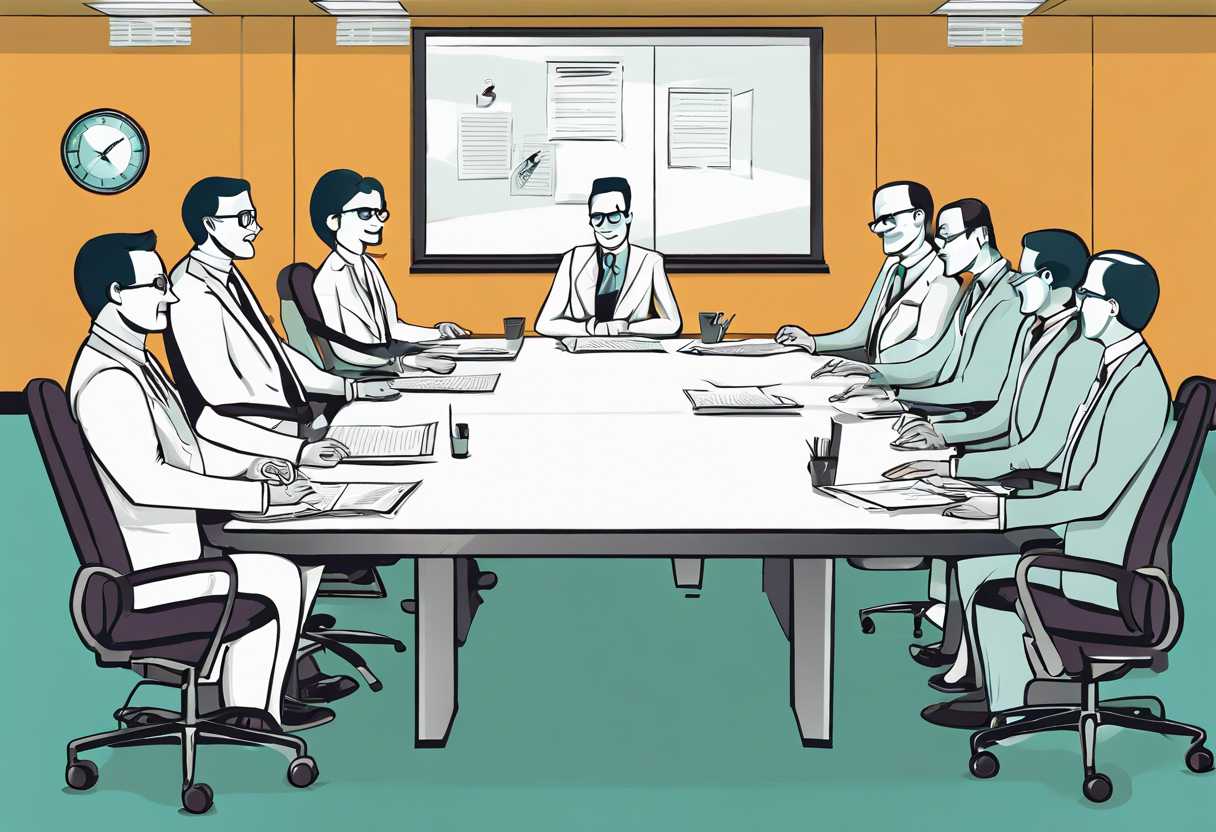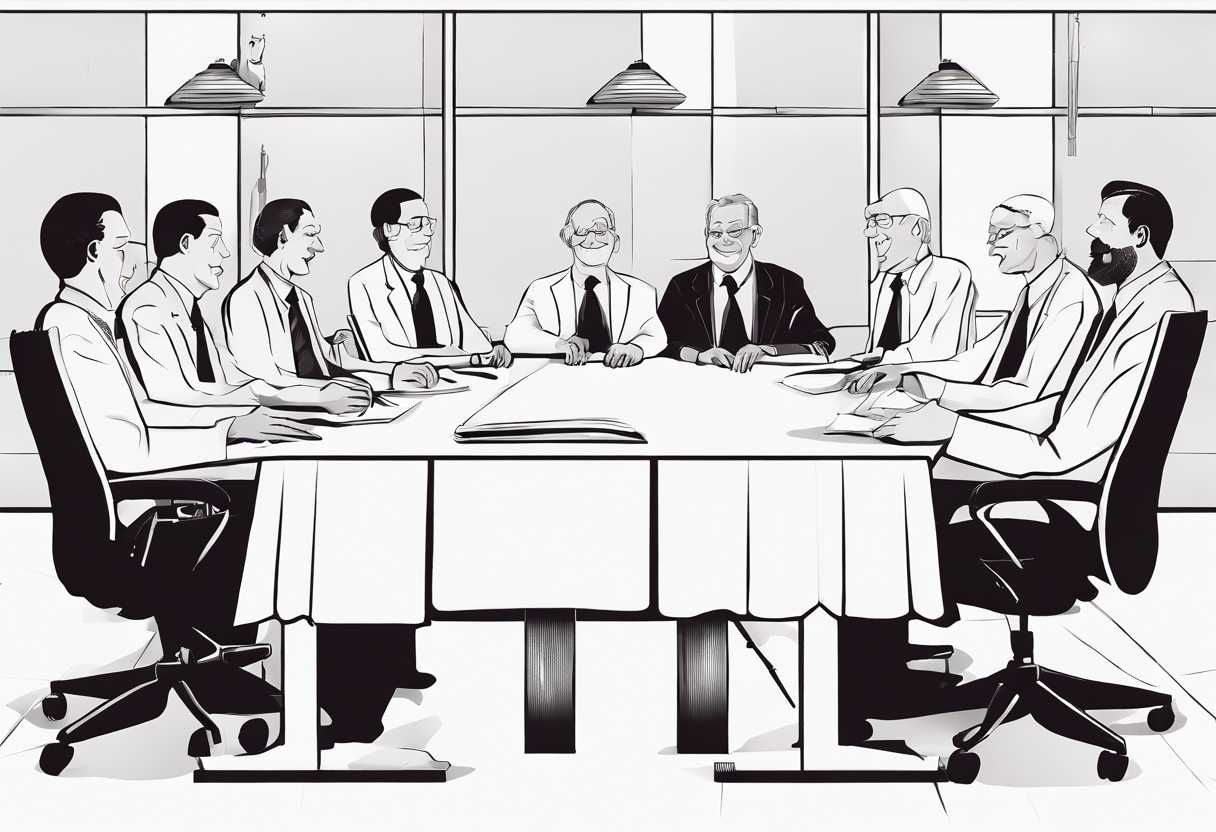Running a post-mortem meeting is a crucial aspect of project management, as it provides an opportunity to reflect on the successes and challenges of a project. In this blog post, we will explore the importance of post-mortem meetings and provide key steps for planning and preparing for a successful session. We will also discuss best practices for facilitating a productive post-mortem meeting and share a sample agenda to guide your discussions. Finally, we will delve into how to leverage the insights gained from post-mortem meetings to drive continuous improvement in your projects. Whether you are a project manager or a team member, this comprehensive guide will equip you with the knowledge and tools to run effective post-mortem meetings and maximize the value of these sessions for your projects.
The Importance of Post-Mortem Meetings in Project Management
Improving Future Projects
Post-mortem meetings are crucial in project management as they provide an opportunity to reflect on the successes and failures of a project. By analyzing what went well and what didn’t, teams can identify areas for improvement and implement changes in future projects. This continuous improvement process is essential for the success of any organization.
Identifying Lessons Learned
During post-mortem meetings, team members have the chance to share their experiences and insights. This open discussion allows for the identification of lessons learned, which can be invaluable for future projects. By documenting these lessons, organizations can avoid making the same mistakes and capitalize on successful strategies.
Building a Culture of Accountability
Conducting post-mortem meetings helps to foster a culture of accountability within a team. By openly discussing the outcomes of a project, team members take ownership of their actions and decisions. This accountability leads to a greater sense of responsibility and a commitment to delivering high-quality work in the future.

Key Steps for Planning and Preparing for a Post-Mortem Meeting
Establish Clear Objectives
Before diving into a post-mortem meeting, it’s crucial to establish clear objectives. What are the specific goals of the meeting? Are you looking to identify areas for improvement, analyze what went wrong, or celebrate successes? By defining the objectives, you can ensure that the meeting stays focused and productive.
Gather Relevant Data and Insights
One of the key steps in planning for a post-mortem meeting is to gather all relevant data and insights. This may include performance metrics, customer feedback, and team observations. By compiling this information beforehand, you can ensure that the meeting is based on concrete evidence rather than subjective opinions.
Assign Responsibilities and Action Items
Once the meeting objectives are clear and the data is gathered, it’s important to assign responsibilities and action items to team members. Who will be responsible for implementing the changes identified in the meeting? By assigning clear action items, you can ensure that the post-mortem meeting leads to tangible improvements and doesn’t end up being just a discussion without any follow-through.

Facilitating a Productive Post-Mortem Meeting: Best Practices and Tips
Setting the Stage for Success
When it comes to conducting a post-mortem meeting, preparation is key. Start by clearly defining the purpose of the meeting and setting specific goals and objectives. This will help keep the discussion focused and ensure that the team stays on track. Additionally, it’s important to create a safe and open environment where team members feel comfortable sharing their thoughts and opinions. Encourage open communication and active participation from everyone involved.
Encouraging Constructive Feedback
One of the main purposes of a post-mortem meeting is to identify what went wrong and how to improve in the future. To achieve this, it’s crucial to encourage constructive feedback from all team members. This means creating a culture where mistakes are seen as learning opportunities rather than failures. Use open-ended questions to prompt discussion and encourage team members to share their perspectives. Remember, the goal is not to assign blame, but rather to identify areas for improvement.
Implementing Actionable Solutions
After identifying areas for improvement, the next step is to develop actionable solutions. This may involve creating a detailed action plan with specific tasks, deadlines, and responsible team members. It’s important to prioritize these action items based on their impact and feasibility. Consider using a table to organize and prioritize the solutions, making it easier for the team to understand and implement them effectively.
Key Components of a Comprehensive Post-Mortem Meeting
When it comes to conducting a post-mortem meeting, it’s essential to have a well-structured agenda in place to ensure that all relevant aspects are covered. Here are the key components that should be included in a comprehensive post-mortem meeting agenda:
Identification of Issues and Challenges
One of the first items on the agenda should be the identification of the issues and challenges that arose during the project or event. This could include technical issues, communication breakdowns, or any other obstacles that impacted the outcome. By clearly identifying these issues, the team can begin to understand the root causes and work towards finding solutions.
Analysis of Root Causes
Once the issues have been identified, the next step is to analyze the root causes behind them. This could involve a detailed examination of the processes, systems, or individuals involved in the project or event. By understanding the underlying reasons for the issues, the team can take proactive steps to prevent similar problems from occurring in the future.
Development of Actionable Solutions
Finally, the agenda should include a discussion on the development of actionable solutions to address the issues and challenges that were identified. This could involve brainstorming sessions, the assignment of specific tasks to team members, or the implementation of new processes or procedures. By developing concrete solutions, the team can ensure that the lessons learned from the post-mortem meeting are put into practice.
Leveraging Post-Mortem Meeting Insights for Continuous Improvement in Your Projects
Identifying Key Issues and Challenges
One of the most valuable aspects of post-mortem meetings is the opportunity to identify key issues and challenges that arose during the project. By analyzing what went wrong and why, teams can gain valuable insights into areas for improvement. This could include issues with communication, resource allocation, or technical challenges. *Understanding the root causes of these issues is crucial for making meaningful improvements in future projects.*
Developing Actionable Solutions
Once the key issues and challenges have been identified, the next step is to develop actionable solutions. This could involve implementing new processes, providing additional training for team members, or making changes to project management methodologies. *By developing actionable solutions based on the insights gained from post-mortem meetings, teams can proactively address potential issues in future projects.*
Implementing Continuous Improvement Strategies
Finally, leveraging post-mortem meeting insights allows teams to implement continuous improvement strategies. This involves incorporating the lessons learned from past projects into future planning and execution. *By continuously refining and optimizing project processes based on post-mortem insights, teams can drive ongoing improvement and achieve better results with each subsequent project.*
Conclusion
Running a post-mortem meeting is an essential part of project management, as it provides a valuable opportunity to reflect on the successes and challenges of a project. By following the key steps for planning and preparing for a post-mortem meeting, and implementing best practices and tips for facilitating a productive discussion, you can ensure that your team gains valuable insights and learns from past experiences.
Utilizing the sample agenda provided in this blog post can help you conduct a comprehensive post-mortem meeting that covers all the necessary aspects of project evaluation. By leveraging the insights gained from these meetings, you can drive continuous improvement in your projects and enhance the overall efficiency and effectiveness of your team.
Remember, the success of a post-mortem meeting lies in the commitment to implementing the identified improvements and learning from past mistakes. By embracing a culture of continuous improvement, you can propel your projects to new heights and achieve greater success in the future.
So, take the time to plan and conduct post-mortem meetings with dedication and purpose, and watch as your projects flourish with the power of reflection and improvement.
Thank you for reading, and we hope this blog post has provided you with valuable insights and practical guidance for running successful post-mortem meetings in your project management endeavors.

